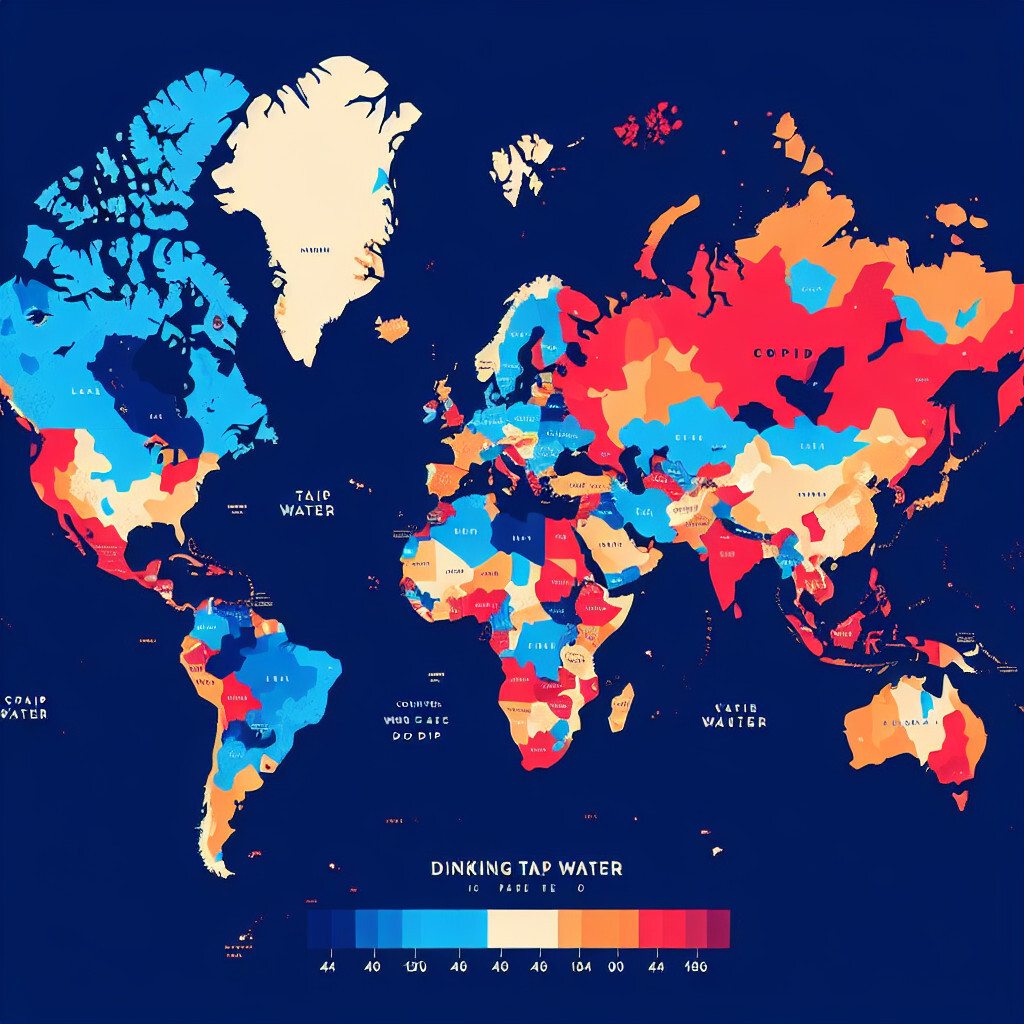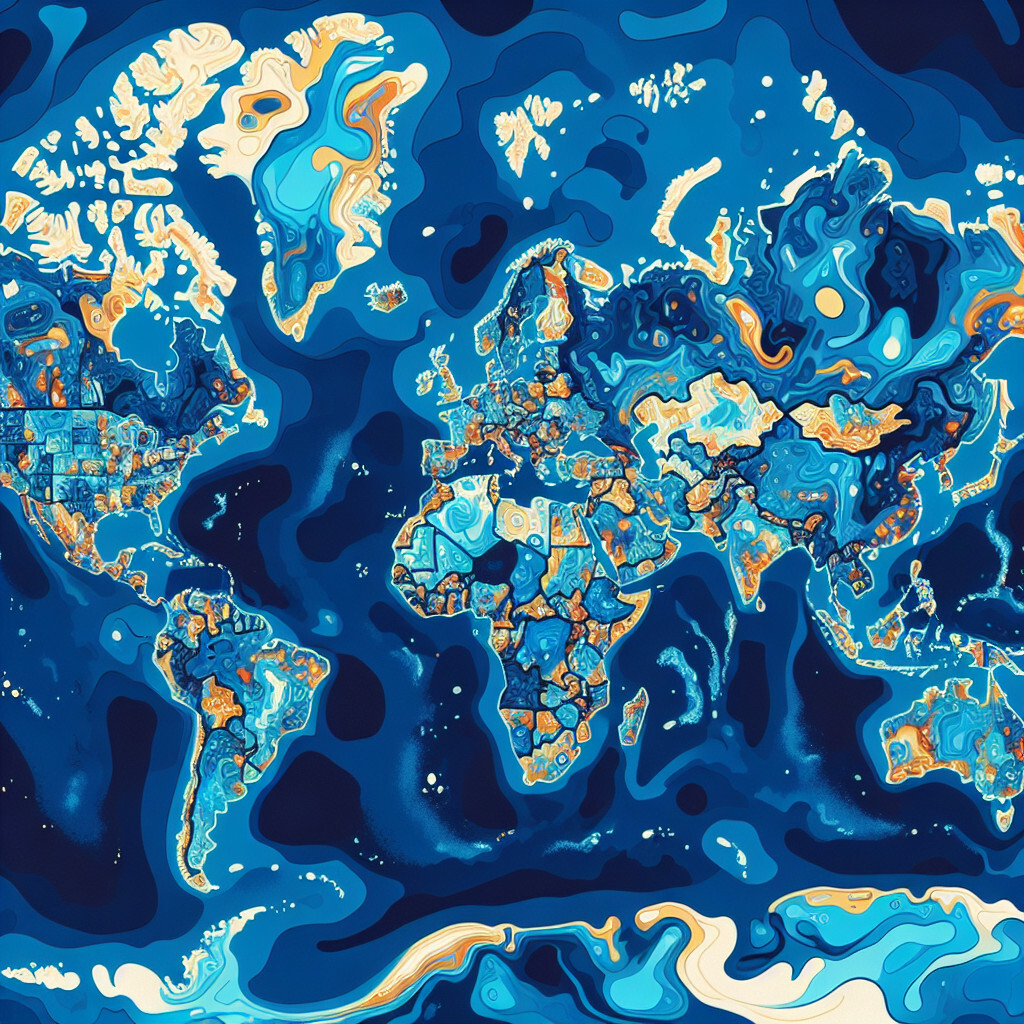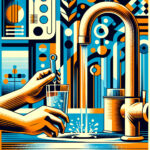-
Table of Contents
“Exploring the Globe: Where Tap Water is Safe to Drink”
Introduction

The safety of tap water varies greatly from country to country. In many developed nations such as Canada, Australia, the United States, and most countries in Europe, tap water is heavily regulated and safe to drink. However, in many developing countries and certain regions of otherwise developed countries, tap water may be contaminated with bacteria, viruses, parasites, or harmful chemicals, making it unsafe for consumption. It’s important for travelers to research the water safety of their destination before drinking from the tap.
Exploring Countries with the Safest Tap Water to Drink
When it comes to quenching your thirst, nothing beats the convenience of turning on the tap and filling your glass with cool, clean water. However, the safety of tap water varies significantly from country to country. In some places, drinking tap water can lead to serious health issues, while in others, it’s as safe as bottled water. This article explores countries where tap water is safe to drink.
Starting in Europe, the tap water in most Western European countries is perfectly safe to drink. For instance, in Denmark, the tap water undergoes strict quality control, ensuring it’s not only safe but also high in minerals beneficial for health. Similarly, in Switzerland, tap water is considered of higher quality than bottled water, thanks to the country’s stringent water treatment processes. Germany, France, and the United Kingdom also boast safe tap water, with the latter even having organizations like ‘Tap Water UK’ promoting its consumption.
Moving to the North, the Scandinavian countries of Sweden, Norway, and Finland are renowned for their pristine natural environments, and this extends to their water. The tap water in these countries is not only safe to drink but is often praised for its excellent taste. Iceland, although not part of Scandinavia, deserves a special mention. Its tap water comes directly from natural springs and is so pure that it requires no treatment.
Crossing the Atlantic, Canada and the United States have some of the safest tap water in the world. In Canada, tap water is regulated by Health Canada and must meet the stringent standards of the Guidelines for Canadian Drinking Water Quality. Similarly, in the United States, the Environmental Protection Agency (EPA) regulates tap water, ensuring it meets the Safe Drinking Water Act’s standards.
In the Southern Hemisphere, New Zealand and Australia stand out for their safe tap water. New Zealand’s tap water comes from protected sources, and its quality is closely monitored. Australia, on the other hand, has one of the world’s most comprehensive water quality monitoring programs, ensuring that its tap water is safe to drink.
In Asia, Singapore is a shining example. The country’s tap water is well-treated and safe to drink, thanks to the rigorous standards set by the Public Utilities Board. Japan also has safe tap water, with its water supply system being one of the world’s most efficient.
However, it’s important to note that even in countries with safe tap water, there can be exceptions. For instance, in rural areas or during a natural disaster, tap water may not be safe to drink. Therefore, it’s always a good idea to check with local authorities or your accommodation provider.
In conclusion, while many countries around the world provide safe tap water, the quality can vary. Therefore, it’s essential to do your research before traveling. Remember, staying hydrated is crucial, but so is ensuring that the water you drink is safe. So, the next time you’re traveling and feel the urge to quench your thirst, you’ll know where you can safely turn on the tap.
The Top Countries Where Tap Water is Safe to Drink
The quality of tap water varies significantly from one country to another, and while it is a basic necessity, not all nations can guarantee its safety for direct consumption. However, there are several countries where tap water is not only safe to drink but also of exceptional quality.
Starting in Europe, the tap water in countries such as Denmark, Sweden, and Germany is considered some of the cleanest in the world. Denmark, in particular, has stringent quality control measures in place, ensuring that the tap water is as pure as bottled water. Sweden, on the other hand, boasts of its tap water being cleaner than bottled water, thanks to its advanced purification systems. Germany also prides itself on its high-quality tap water, which is regularly tested and adheres to strict European Union standards.
Moving to North America, Canada and the United States are known for their safe and clean tap water. In Canada, tap water is treated and tested regularly, making it safe for consumption across the country. Similarly, in the United States, the Environmental Protection Agency (EPA) regulates public drinking water, ensuring it meets specific safety standards. However, it’s worth noting that there can be regional variations in water quality, so it’s always a good idea to check local advisories.
In the Southern Hemisphere, New Zealand and Australia stand out for their excellent tap water quality. New Zealand’s tap water comes primarily from pristine sources such as lakes, rivers, and underground aquifers, making it safe to drink straight from the tap. Australia, on the other hand, has strict regulations in place to ensure the safety of its tap water, which is regularly tested for harmful bacteria and chemicals.
In Asia, Singapore is renowned for its high-quality tap water. The country’s water supply is meticulously managed and treated, making it safe to drink directly from the tap. This is a significant achievement considering the high population density and limited natural resources in Singapore.
In the Middle East, Israel is a notable exception where tap water is safe to drink. Despite its arid climate and limited water resources, Israel has invested heavily in water treatment and desalination plants, ensuring the safety and quality of its tap water.
While these countries offer safe tap water, it’s important to remember that water quality can vary within countries, especially in large and diverse nations. Therefore, it’s always advisable to check local water advisories or ask locals if you’re unsure about the safety of the tap water.
Moreover, even in countries with safe tap water, travelers may still experience minor digestive issues due to the change in water composition. This doesn’t necessarily mean the water is unsafe, but rather that your body may need time to adjust to the new environment.
In conclusion, while many countries around the world provide safe and clean tap water, it’s always important to do your research before drinking tap water in a foreign country. This not only ensures your safety but also contributes to a more enjoyable travel experience.
A Global Guide: Countries with Drinkable Tap Water
As global citizens, it is essential to be aware of the quality of tap water in different countries. This knowledge is particularly crucial for travelers who need to stay hydrated while avoiding potential health risks. This article provides a global guide to countries where tap water is safe to drink.
In North America, the United States and Canada boast high-quality tap water that is safe for consumption. The water is treated, purified, and regularly tested to meet stringent safety standards. However, it’s worth noting that in some rural areas or cities with aging infrastructure, tap water may contain higher levels of lead or other contaminants. Therefore, it’s always a good idea to check local advisories.
Moving to Europe, most Western European countries, including the United Kingdom, France, Germany, and the Nordic countries, have excellent tap water quality. In these countries, tap water undergoes rigorous testing and treatment processes, making it as safe, if not safer, than bottled water. However, in some Eastern European countries, it is advisable to avoid tap water due to potential contamination.
In the Asia-Pacific region, the situation varies widely. Countries like Japan, South Korea, Singapore, and Australia have top-notch tap water quality. These countries have strict water treatment and testing protocols, ensuring the safety of their tap water. However, in many other Asian countries, including China, India, and Indonesia, it is generally recommended to avoid drinking tap water due to concerns about pollution and inadequate water treatment facilities.
In the Middle East, tap water safety varies significantly from one country to another. In Israel and the United Arab Emirates, tap water is safe to drink, thanks to advanced water treatment technologies. However, in many other Middle Eastern countries, it is safer to stick to bottled water.
In Africa, tap water is generally not safe to drink due to inadequate water treatment facilities and high levels of pollution in many areas. There are exceptions, such as in Namibia, where the tap water in urban areas is usually safe to drink. However, it is generally advisable for travelers to Africa to drink bottled or treated water.
In South America, the tap water quality varies widely. In countries like Chile and Uruguay, tap water is safe to drink. However, in many other South American countries, including Brazil, Peru, and Bolivia, it is recommended to avoid tap water due to potential contamination.
In conclusion, while many countries around the world have safe, drinkable tap water, there are also many where it is advisable to avoid it. It’s important to research the tap water safety of your destination before traveling. Remember, when in doubt, it’s always safer to opt for bottled water or use a reliable water purification method. This not only ensures your health and safety but also allows you to enjoy your travels without the worry of water-related illnesses.
Traveler’s Guide: Countries with Safe Tap Water Consumption
Traveling is an exciting adventure that opens up a world of new experiences, cultures, and cuisines. However, one aspect of travel that often gets overlooked is the safety of drinking tap water. The quality of tap water varies greatly from country to country, and in some places, it can pose serious health risks. This article aims to provide a comprehensive guide to countries where tap water is safe to drink, helping travelers stay hydrated and healthy during their journeys.
Firstly, it’s important to note that the majority of developed countries have safe tap water. This includes most of Western Europe, such as the United Kingdom, France, Germany, and Spain, where tap water is not only safe to drink but often of higher quality than bottled water. In these countries, strict regulations and advanced water treatment processes ensure that tap water is free from harmful bacteria and contaminants.
Moving across the Atlantic, the United States and Canada also boast high-quality tap water. In fact, the United States has one of the safest water supplies in the world, thanks to the Safe Drinking Water Act that enforces stringent standards for water quality. Similarly, in Canada, tap water undergoes rigorous testing and treatment, making it as safe, if not safer, than bottled water.
In the Southern Hemisphere, Australia and New Zealand are renowned for their clean, fresh tap water. Both countries have strict water quality standards and state-of-the-art treatment facilities, ensuring that tap water is safe to drink across all cities and towns.
In Asia, the situation is a bit more varied. Japan and Singapore stand out as countries with exceptionally safe tap water. Japan’s water supply is meticulously managed and tested, resulting in tap water that is clean, tasty, and safe to drink. Singapore, on the other hand, is known for its NEWater system, a revolutionary water purification process that produces high-quality drinking water.
However, it’s worth noting that in many developing countries, tap water may not be safe to drink. This includes popular tourist destinations like India, Mexico, and parts of Africa, where water contamination is a serious issue. In these countries, it’s recommended to drink bottled water or use a reliable water purification method.
Even in countries with safe tap water, travelers should be aware of potential differences in water composition. For instance, the tap water in some regions may contain higher levels of minerals, which can cause minor digestive issues for those not accustomed to it. Therefore, it’s always a good idea to gradually adjust to the local water or opt for bottled water if any discomfort arises.
In conclusion, while many countries around the world provide safe tap water, it’s crucial for travelers to do their research before their trip. Understanding the local water situation can help prevent health issues and ensure a more enjoyable travel experience. Remember, when in doubt, it’s always safer to opt for bottled water or use a water purification method. Safe travels and stay hydrated!
Q&A
1. Question: Is tap water safe to drink in Canada?
Answer: Yes, tap water is generally safe to drink in Canada.
2. Question: Can I drink tap water in Japan?
Answer: Yes, tap water in Japan is safe to drink.
3. Question: Is it safe to drink tap water in Mexico?
Answer: No, it is generally not recommended to drink tap water in Mexico.
4. Question: Can I drink tap water in Australia?
Answer: Yes, tap water in Australia is safe to drink.
Conclusion
In conclusion, tap water is generally safe to drink in developed countries such as the United States, Canada, most of Europe, Australia, New Zealand, and Japan. However, it’s recommended to avoid tap water in many developing countries or regions due to potential contamination. Always research the water safety of a specific country before traveling.






